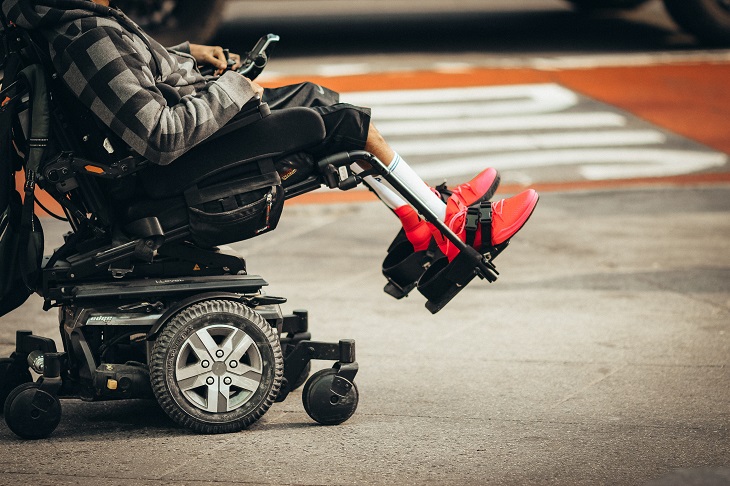Colorado has a well-run and efficient handicap parking program. There is copious handicap parking infrastructure across the Centennial State. Colorado’s rural parts, areas of natural beauty, and major cities are all well serviced by handicap parking spaces.
Disabled Parking In Colorado
A Colorado disabled parking permit entitles its holder to avail of handicap parking infrastructure across the Centennial State and beyond. Getting a disabled parking permit in Colorado is a simple procedure. The application process is quick and easy.
People tend to have many questions about disabled parking in Colorado, such as… What are the qualifying conditions for handicap parking in Colorado? What kinds of Colorado disabled parking permits are available? How do you apply for a disabled permit in the Centennial State? And how do you renew a handicap permit in Colorado?
Today we will answer all of these important questions and more.

Who Qualifies For A Disabled Parking Permit In Colorado?
To qualify for a Colorado disabled parking permit a person must have one of the following disabilities:
- They cannot walk two hundred feet without stopping to rest.
- They cannot walk without the use of a brace, cane, crutch, another person, prosthetic device, wheelchair, or another assistive device.
- They are restricted by lung disease to such an extent that their forced (respiratory) expiratory volume for one second, when measured by spirometry, is less than one liter, or the arterial oxygen tension is less than sixty mm/hg on room air or at rest.
- They use portable oxygen.
- They have a cardiac condition that is classified in severity as class III or IV by the American Heart Association.
- They are severely limited in their ability to walk due to an arthritic, neurological, or orthopedic condition.
What Kinds Of Disabled Parking Permits Are Available In Colorado?
The following types of disabled parking permit are available in Colorado:
- Three-Year Placards or Plates – for people with permanent, extended, or temporary disabilities.
- Temporary Placard – for people with short-term disabilities.
- Disabled Veterans Plates
- A Remuneration-Exempt Disability Placard – for people who have lost fine motor control in both hands, or are unable to reach a height of 48 inches from the ground due to lack of finger, hand, or upper extremity strength or mobility, or are unable to reach a parking meter due to the use of a wheelchair or other ambulatory device.
How Do I Get A Handicap Placard In Colorado?
To get a Colorado handicap parking permit, you can go to the Dr. Handicap online clinic and have a telemedicine consultation with a Colorado medical professional.
The following medical professionals can verify an applicant for disable parking in Colorado:
- Licensed physician
- Commissioned Medical Officer of the U.S. Armed Forces, the U.S. Public Health Service, and/or the U.S. Veterans Administration
- Advanced Practice Nurse
- Physician Assistant
- Podiatrist
- Chiropractor (short-term permit only)
- Physical Therapist (short-term permit only)
Once your disability has been verified, you and the medical professional will complete the relevant sections of an application form and submit it to the Colorado Department of Revenue, Division of Motor Vehicles. The application form can be submitted by post, in person, or through the Colorado Division of Motor Vehicles website.
Do Permanent Handicap Placards Expire?
Colorado does not have a permanent handicap permit. The handicap permit available to people with a permanent disability is the three-year permit, which, as the name suggests, must be renewed every three years. However, it is only necessary to get a medical professional’s signature for renewal every third time (so every nine years).
When Does A Disabled Parking Placard Need To Be Renewed In Colorado?
A Colorado three-year permit must be renewed every three years. A Colorado short-term placard must be renewed after 90 days and can be renewed only once.
How Do I Renew My Handicap Placard In Colorado?
Can I renew my handicap placard online in Colorado? Yes, you can renew your Colorado handicap parking permit online at the Colorado Division of Motor Vehicles website.
To renew your permit, just complete an application form. There is no fee to renew placards, but fees may apply when renewing a license plate. New medical professional verification is required when renewing if you have an extended, temporary, or short-term disability. As mentioned above, permanently disabled people need verification every third renewal.

Can I Replace A Lost, Stolen, Or Damaged Permit In Colorado?
If your Colorado disabled parking permit gets lost, stolen, or damaged, you can get a replacement. A replacement permit can be obtained by applying through the Colorado Division of Motor Vehicles website.
Are Colorado Disabled Parking Permits Valid Outside The State?
Colorado handicap permits are valid in all other US states. They are also valid in the following foreign countries:
- UK
- EU
- Canada
- Mexico
- Japan
- Australia
- New Zealand
Featured image by Cassie Gallegos on Unsplash

